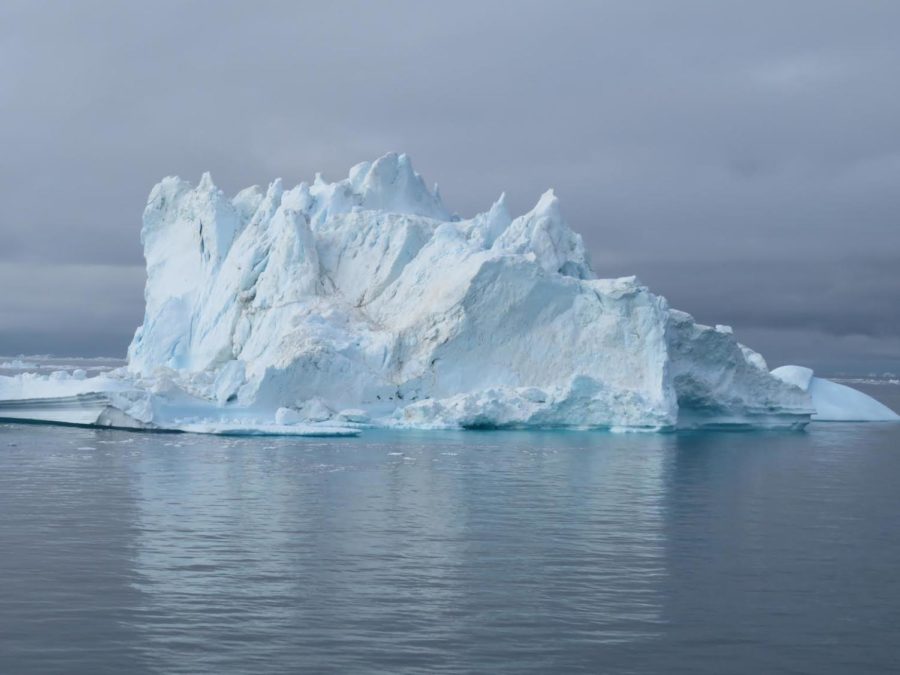Kian Kafaie ‘19 reflects on summer Arctic adventure
While many students attended summer camps or held summer jobs, Urban student Kian Kafaie ‘19 was part of a summer program called Students on Ice (SOI). The 2018 program focused on ocean literacy, sustainable development goals, climate change adaptation, and truth and reconciliation “with the goal of creating understanding and connections between youth from around the world,” according to their mission statement.
The students sailed around the Arctic, starting in Kangerlussuaq in western Greenland. They then traveled north around the coast of Greenland and along the coast of Canada.
SOI is globally recognized as a leader in Polar Education and has received many awards for the success of their unique programs.
Over 2,500 students have participated in Students on Ice in the past 15 years. These students come from all around the world, bringing diverse opinions and thoughts on the serious environmental topics that SOI is addressing.
Kafaie feels that climate change is very important to learn about and SOI has allowed him to see it up close. “What happens in the Arctic does not stay there,” said Kafaie. “While the impacts of climate change might be most visible there, they impact absolutely all of us, and the responsibility to care about these issues and take action is universal.” He said that the trip really opened his eyes about climate change because, in the Arctic, the severity of the issue is visible. Kafaie explained that the level of ice melt was easily observable, especially at the Greenland Ice Cap and that large areas of the ice cap are now “stained black from soot from forest fires in Canada,” which accelerates the melt.
The program also pushes students to connect with the people living in local Greenland communities that can see dramatic changes taking place daily. Kafaie and the other SOI students met an inhabitant of the area who talked to them about the rapid warming of the climate that he had experienced since his childhood. If big icebergs end up near communities, he warned, pieces could fall off and trigger a tsunami.
This catastrophic event would not be unprecedented. In June 2017, the tallest tsunami in world history, measured at 100 meters, devastated a Greenland community called Nuugaatsiaq. The tsunami swept through the fishing village, causing four deaths and destroying eleven houses. Many Greenland communities have also recently been evacuated in response to landslides and other safety threats.
SOI students also spoke with locals about how climate change not only causes natural disasters, but it also has a major effect on wildlife. Kafaie said that an Inuit elder who went on the trip with them mentioned that nowadays, he’ll find whole herds of caribou washed up dead on the shore. The man said they were “probably trying to cross over the sea ice between islands as they have done historically, but because the ice melts much earlier now, it gives way and they end up drowning. In some cases, groups of people have gotten lost to the ice because of its unpredictability.”
Recently, numerous efforts have been made to connect scientists and community members to “manage wildlife and natural resources in ways that are equitable and protect Inuit people’s rights to the animals and places on which their livelihoods depend,” said Kafaie. New programs are trying to reverse the traditional system of studying the Arctic from an outsider’s perspective, and instead “focus on research fuelled by the needs and concerns of community members,” said Kafaie. This helps the research be responsive to the “front-line communities most directly affected by issues such as climate change,” he added.
Kafaie said that whoever goes on the trip should be “interested in participating and passionate about the environment and social justice. It’s an “incredible privilege to be able to visit the Arctic and learn first hand about the issues the region faces—and along with that privilege comes an obligation to take action and spread the word in some way,” said Kian.
While there were many opportunities to actively participate when learning about geography, oceanography, and glaciology, there were also opportunities for creativity. Kafaie said that their “nightly briefings included talent shows where musicians could perform and [they] had a dedicated space for making art on the ship. The landscapes were also “stunningly beautiful and provided a lot of artistic inspiration.”
Kafaie’s experiences with SOI have also inspired him to take action within the Urban community.
This year, Kafaie is a co-leader of Students of Color (SOC) and is using his position to “challenge the flawed notion that environmentalism is just something for rich and privileged white people, and start discussions about environmental justice and environmental racism.” He is collaborating with Green Team members to set up a series of forums and events that could educate students and raise awareness about these issues.
Kafaie is also working on an event planned to happen during the Month of Understanding to “educate people about climate change in the Arctic and how it connects to conservation, social issues and the legacy of colonization in Inuit communities.” He plans to organize a Skype call with someone he met during the trip who could speak to these issues from a “broad social perspective as well as from the personal level,” he said.
One of the most memorable experiences for Kafaie was spending a day at a local community, Qeqertarsuaq, in Greenland. The students played a soccer match against the local team with icebergs right in front of the field. Afterward, an indigenous Canadian singer-songwriter duo that joined them on the trip gave the whole group a concert and everyone danced. There were many “amazing Inuit throat singing performances.”
Reflecting on the experience as a whole, Kafaie said, “the trip definitely opened my eyes to the depth of injustices in indigenous communities and how interrelated social equity and the empowerment of communities are to effectively addressing climate change.”


